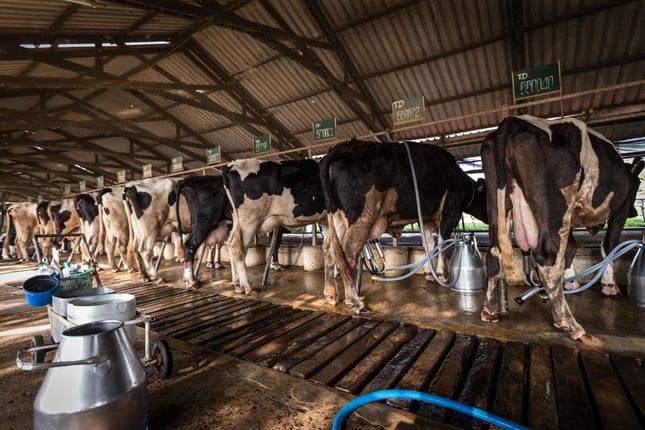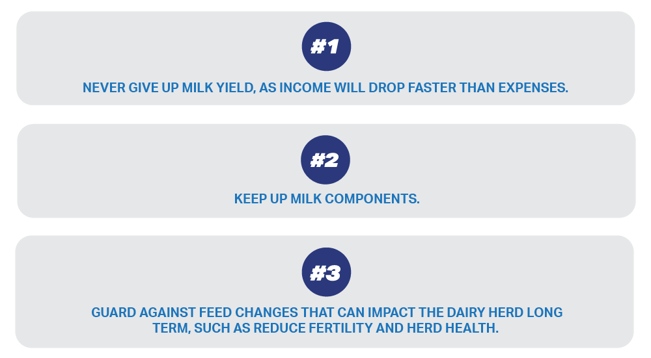THE THREE GOLDEN RULES FOR YOUR HERD'S ENERGY BANK
Posted by Dr. Jim Lofton on Sep 18, 2022 6:35:36 PM

In today’s challenging economic situation for dairy producers, critical economic decisions will be made in a number of areas—including feeding programs. At the January 2009 Illinois Dairy Days program, three Golden Rules for dairy production were discussed for those who intend to stay in business. These rules are:
 Each of these rules is quite dependent on the energy status of cows. Think of cows as an “energy bank”. They take energy in and use it in various ways, which then determines what the returns for this energy investment will be. Cows do not make the rules for how they use energy, but there are some common principles they follow.
Each of these rules is quite dependent on the energy status of cows. Think of cows as an “energy bank”. They take energy in and use it in various ways, which then determines what the returns for this energy investment will be. Cows do not make the rules for how they use energy, but there are some common principles they follow.
First, energy is required for body maintenance. If energy is not adequate, cows will deteriorate, not produce milk well, and will deplete their own body condition. Their health will be compromised. Then, if they survive, it will take time for them to fully recover, which also takes energy over time.
Second, this energy “currency” is somewhat interchangeable and convertible. If cows need more energy for milk production than they are able to consume, either milk production decreases or body condition is lost. However, there is a minimum balance requirement for this body condition energy bank. If cows have poor body condition, they may not be able to
convert remaining body condition to maintain milk production. In that case, milk production will decrease because staying alive has a higher priority than milk production. Likewise, reproduction may suffer when the energy bank account is low. Also, the higher the milk fat and
protein, the more energy is required from the bank to produce these levels.
That leads to the question of how to best maintain this energy bank. Particularly in earlier lactation, cows cannot eat enough to meet their energy requirements for milk production. Thus, they make withdrawals from their energy bank to provide for milk production. As officers of the cows’ energy bank, we need to do things to minimize how much and how long cows make withdrawals
The most valuable currency to deposit in the cows’ energy bank is dietary fat because it has 2.25 times more energy than protein and carbohydrate. As Mike Hutjens recently stated, “Aspects that could be economically wrong decisions include removing fat and oil sources...”1
What about fat decreasing dry matter intake (DMI)? That depends on the fat source. There are three primary categories of fat that can be “deposited in the energy bank”: triglycerides (tallow and oils), saturated free fatty acids (such as Energy Booster 100®), and calcium soaps of fatty acids (CSFA).
Cows do not like greasiness from liquid tallow or oil. Cows also decrease DMI related to dietary unsaturated fatty acid (UFA) sources. When UFAs from CSFA escape ruminal biohydrogenation, it results in release of more cholecystokinin (CCK) in the small intestine, which decreases rumination and DMI.2, 3 In fact, the 2001 Dairy NRC on page 31 makes it clear: “Calcium salts of FAs decreased dry matter intake by 2.5 percent for each percentage unit in the diet above control.... Added hydrogenated FAs and tri-glyceride did not decrease dry matter intake.”4 Ruminal biohydrogenation of UFA also produces low levels of trans-10, cis-12 C18:2, which is a potent milk fat depressant.
Don’t let cows suffer from excessive energy withdrawals! Invest in a fat source that does not reduce intake, helps increase milk production and maintain milk components—invest in Energy Booster 100.
Topics: ANIMAL NUTRITION
